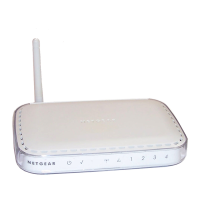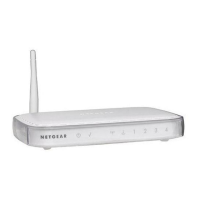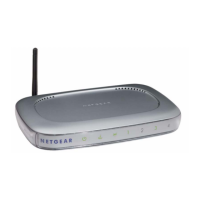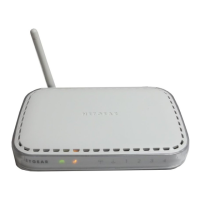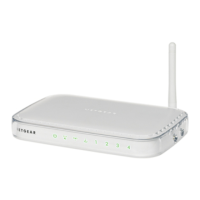Reference Manual for the 54 Mbps Wireless Router WGR614 v6
-1 0 Glossary
202-10099-01, April 2005
Satellite broadband
A wireless high-speed Internet connection provided by satellites. Some satellite broadband connections are
two-way—up and down. Others are one-way, with the satellite providing a high-speed downlink and then
using a dial-up telephone connection or other land-based system for the uplink to the Internet.
Server
A computer that provides its resources to other computers and devices on a network. These include print
servers, Internet servers and data servers. A server can also be combined with a hub or router.
Site survey
The process whereby a wireless network installer inspects a location prior to putting in a wireless network.
Site surveys are used to identify the radio- and client-use properties of a facility so that access points can be
optimally placed.
SSID (also called ESSID)
A 32-character unique identifier attached to the header of packets sent over a WLAN that acts as a password
when a mobile device tries to connect to the BSS. (Also called ESSID.) The SSID differentiates one WLAN
from another, so all access points and all devices attempting to connect to a specific WLAN must use the
same SSID.
A device will not be permitted to join the BSS unless it can provide the unique SSID. Because an SSID can
be sniffed in plain text from a packet, it does not supply any security to the network. An SSID is also
referred to as a Network Name because essentially it is a name that identifies a wireless network.
SSL (Secure Sockets Layer)
Commonly used encryption scheme used by many online retail and banking sites to protect the financial
integrity of transactions. When an SSL session begins, the server sends its public key to the browser. The
browser then sends a randomly generated secret key back to the server in order to have a secret key
exchange for that session.
Subnetwork or Subnet
Found in larger networks, these smaller networks are used to simplify addressing between numerous
computers. Subnets connect to the central network through a router, hub or gateway. Each individual
wireless LAN will probably use the same subnet for all the local computers it talks to.
Switch
A type of hub that efficiently controls the way multiple devices use the same network so that each can
operate at optimal performance. A switch acts as a networks traffic cop: rather than transmitting all the
packets it receives to all ports as a hub does, a switch transmits packets to only the receiving port.
TCP (Transmission Control Protocol)
A protocol used along with the Internet Protocol (IP) to send data in the form of individual units (called
packets) between computers over the Internet. While IP takes care of handling the actual delivery of the
data, TCP takes care of keeping track of the packets that a message is divided into for efficient routing
through the Internet.

